 |
The Aggregate Demand For Wheat:NETWORK EXTERNALITIES |
| << Income & Substitution Effects:Determining the Market Demand Curve |
| Describing Risk:Unequal Probability Outcomes >> |
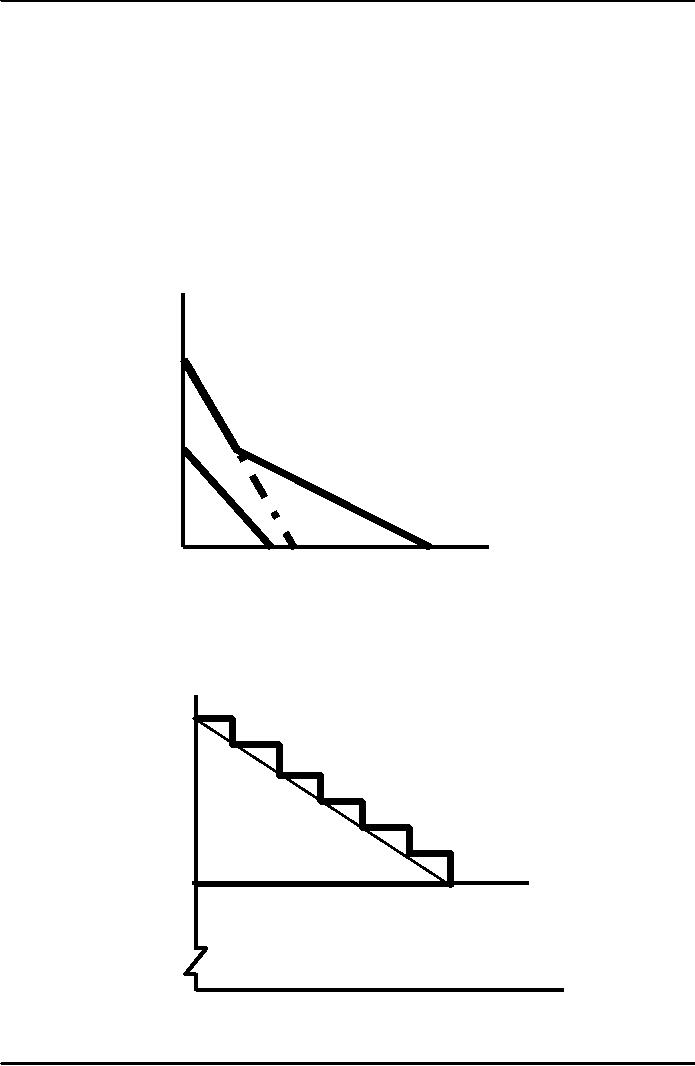
Microeconomics
ECO402
VU
Lesson
12
The
Aggregate Demand For
Wheat
The
demand for U.S. wheat is
comprised of domestic demand
and export demand.
The
domestic demand for wheat is
given by the equation:
QDD = 1700 -
107P
The
export demand for wheat is
given by the equation:
QDE = 1544 -
176P
Domestic
demand is relatively price
inelastic (-0.2), while
export demand is more price
elastic
(-0.4).
Price
($/bushel)
20
18
Total
world demand is
16
A
the
horizontal sum of the
domestic
demand AB
and
14
export
demand CD.
12
10
C
E
8
Total
Demand
6
4
Export
Demand
Domestic
Demand
2
Wheat(millio
F
D
B
n
bushels/yr.)
0
1000
2000
3000
4000
Consumer
Surplus
Consumer
Surplus
The difference
between the maximum amount a
consumer is willing to pay
for a good
and
the amount actually
paid.
Price
The
consumer surplus
($
per
20
of
purchasing 6 concert
ticket)
tickets
is the sum of the
19
surplus
derived from
each
one individually.
18
17
16
Consumer
Surplus
15
6
+ 5 + 4 +3
+
2 + 1 = 21
Market
Price
14
13
Rock
Concert Tickets
0
1
2
3
4
5
6
58
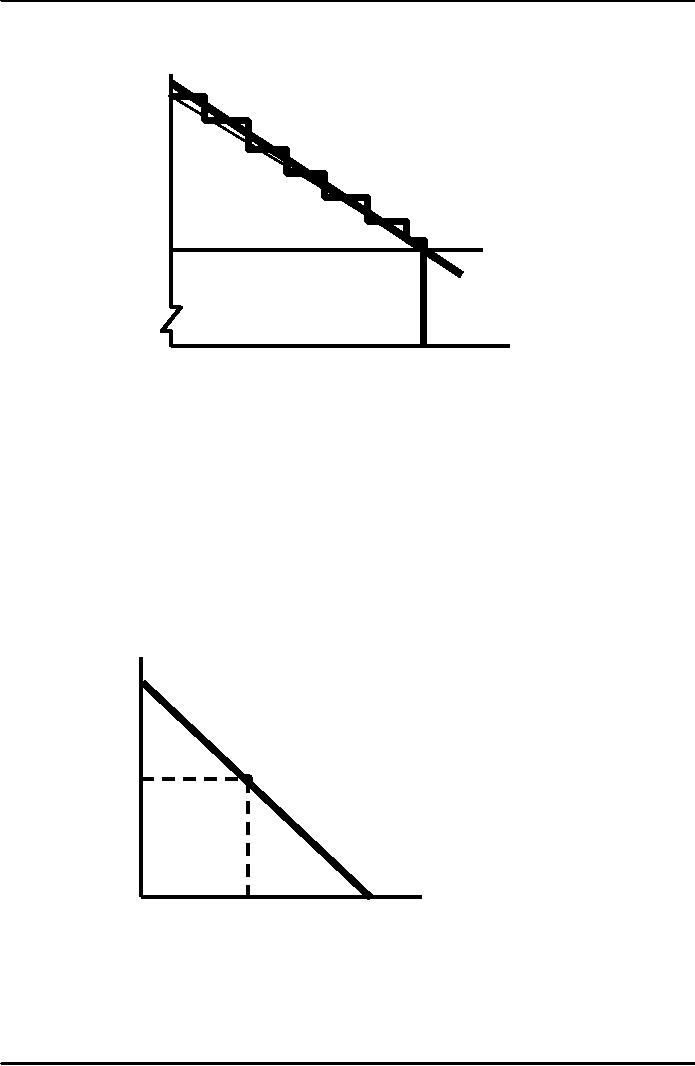
Microeconomics
ECO402
VU
The
stepladder demand curve can
be converted into a straight-line
demand curve by
making
the
units of the good
smaller.
Price
20
Consumer
Surplus
($
per
for
the Market Demand
ticket)
19
18
17
16
Consumer
Surplus
15
1/2x(20- 14)x6,500= $19,500
14
Market
13
Demand
Actual
Expenditur
0
Rocket
concert tickets
1
2
3
4
5
6
Combining
consumer surplus with the
aggregate profits that
producers obtain we can
evaluate:
1)
Costs and benefits of
different market
structures
2)
Public policies that alter
the behavior of consumers
and firms
An
Example: The Value of Clean
Air
Air
is free in the sense that we
don't pay to breathe
it.
Question:
Are the benefits of cleaning
up the air worth the
costs?
People
pay more to buy houses
where the air is
clean.
Data
for house prices among
neighborhoods of Lahore and
Rawalpindi were compared
with
the
various air
pollutants.
The
shaded area gives
the
2000
consumer
surplus generated
($Value
when
air pollution is
per
puma
reduced
by 5 parts per 100
of
reduction)
million
of nitrous oxide at
a
cost of $1000 per
part
reduced.
A
1000
NOX
(pphm)
Pollution
0
10
5
Reduction
59
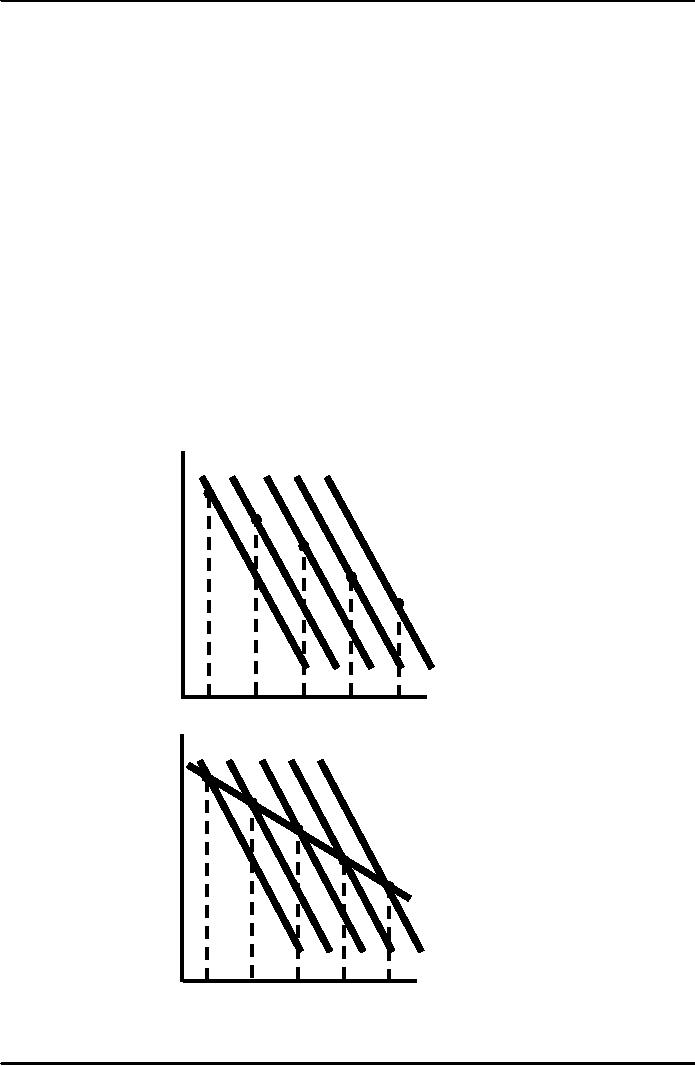
Microeconomics
ECO402
VU
NETWORK
EXTERNALITIES
Up
to this point we have
assumed that people's
demands for a good are
independent of one
another.
If
fact, a person's demand may
be affected by the number of
other people who
have
purchased
the good.
If
this is the case, a network
externality exists.
Network
externalities can be positive or
negative.
A
positive
network externality exists if
the quantity of a good
demanded by a consumer
increases
in response to an increase in purchases
by other consumers.
Negative
network externalities are
just the opposite.
The
Bandwagon Effect
This is the
desire to be in style, to have a
good because almost everyone
else
has
it, or to indulge in a
fad.
This is the
major objective of marketing
and advertising campaigns
(e.g. toys,
clothing).
Positive
Network Externality: Bandwagon
Effect
Price
D2
D4 D60 D8
D100
When
consumers believe
more
($
per
people
have purchased the
unit)
product,
the demand curve
shifts
further
to the the right .
Quantity
(thousands
per month)
20
40
60
80
100
Price
D20
D40 D60 D80
D100
The
market demand
($
per
curve
is found by joining
unit)
the
points on the
individual
demand
curves. It is relatively
more
elastic.
Demand
Quantity
(thousands
per month)
20
40
60
80
100
60
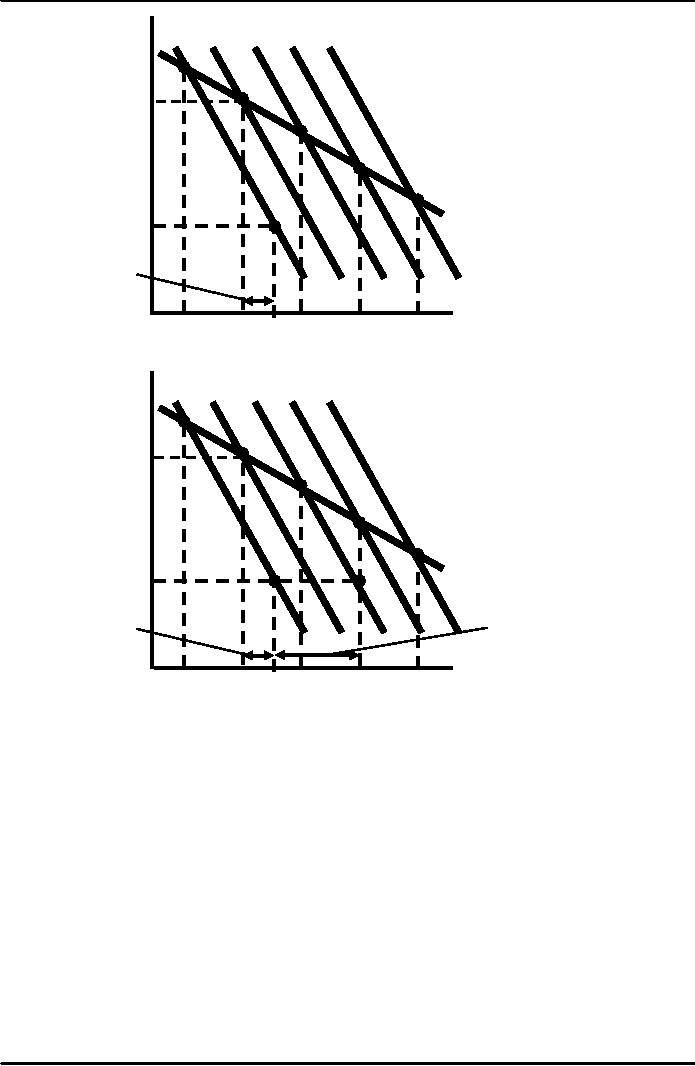
Microeconomics
ECO402
VU
Price
D20
D40 D60 D80
D100
($
per
Suppose
the price falls
unit)
from
$30 to $20. If there
were
no bandwagon effect,
quantity
demanded would
only
increase to 48,000
$30
Demand
$20
Pure
Price
Effect
Quantity
(thousands
per month)
20
40
48
60
80
100
Price
D20
D40 D60 D80
D100
But
as more people buy
($
per
the
good, it becomes
unit)
stylish
to own it and
the
quantity demanded
increases
further.
$30
Demand
$20
Bandwagon
Pure
Price
Effect
Effect
Quantity
40
48 60
(thousands
per month)
20
80
100
The
Snob Effect
If the network
externality is negative, a
snob
effect exists.
The
snob
effect refers to
the desire to own exclusive
or unique goods.
The
quantity demanded of a "snob"
good is higher the fewer
the people who own
it.
61
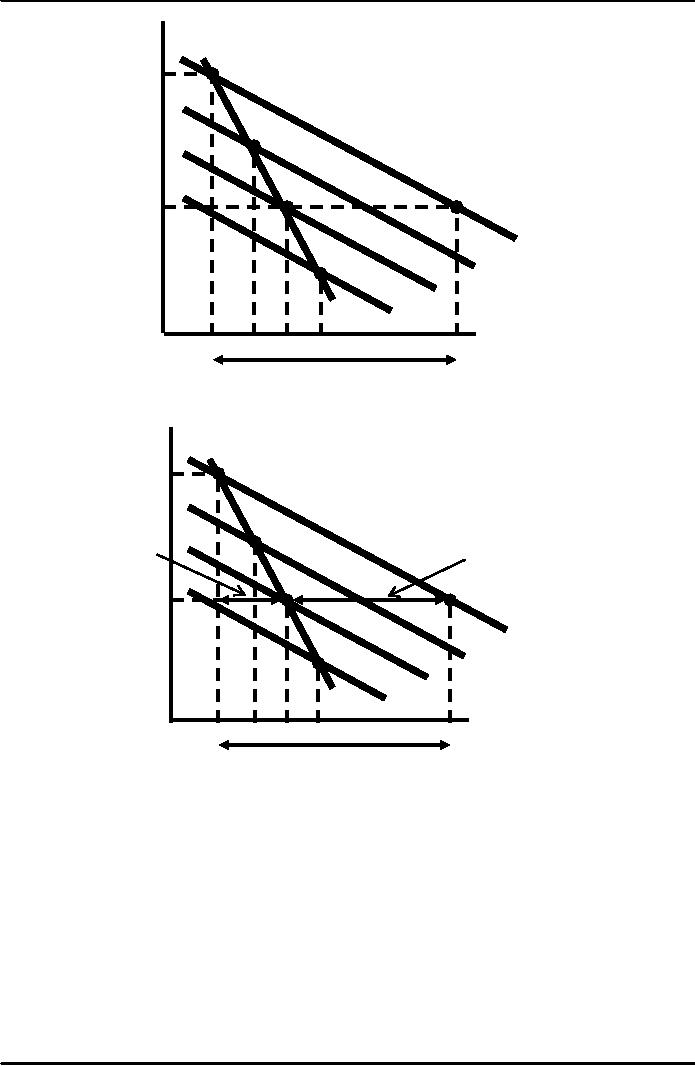
Microeconomics
ECO402
VU
Price
Originally
demand is D2,
($
per
Demand
when
consumers think 2000
unit)
people
have bought a good.
$30,000
However,
if consumers think
4,000
people
have bought the
good,
demand
shifts from D2 to
D6 and its
snob
value has been
reduced.
$15,000
D2
D4
D6
D8
Quantity
(thousands
per
month)
2
4
6
8
14
Pure
Price Effect
Demand
Price
The
demand is less elastic
and
($
per unit)
as
a snob good its value is
greatly
$30,000
reduced
if more people own
it.
Sales decrease as a
result.
Examples:
Rolex watches and
long
lines
at the ski lift.
Net
Effect
Snob
Effect
$15,000
D2
D4
D6
D8
Quantity
(thousands
per
month)
2
4
6
8
14
Pure
Price Effect
Network
Externalities and the
Demands
for
Computers and Fax
Machines
Examples
of Positive Feedback
Externalities
Mainframe
computers: 1954 -
1965
Microsoft
Windows PC operating
system
Fax-machines
and e-mail
62
Table of Contents:
- ECONOMICS:Themes of Microeconomics, Theories and Models
- Economics: Another Perspective, Factors of Production
- REAL VERSUS NOMINAL PRICES:SUPPLY AND DEMAND, The Demand Curve
- Changes in Market Equilibrium:Market for College Education
- Elasticities of supply and demand:The Demand for Gasoline
- Consumer Behavior:Consumer Preferences, Indifference curves
- CONSUMER PREFERENCES:Budget Constraints, Consumer Choice
- Note it is repeated:Consumer Preferences, Revealed Preferences
- MARGINAL UTILITY AND CONSUMER CHOICE:COST-OF-LIVING INDEXES
- Review of Consumer Equilibrium:INDIVIDUAL DEMAND, An Inferior Good
- Income & Substitution Effects:Determining the Market Demand Curve
- The Aggregate Demand For Wheat:NETWORK EXTERNALITIES
- Describing Risk:Unequal Probability Outcomes
- PREFERENCES TOWARD RISK:Risk Premium, Indifference Curve
- PREFERENCES TOWARD RISK:Reducing Risk, The Demand for Risky Assets
- The Technology of Production:Production Function for Food
- Production with Two Variable Inputs:Returns to Scale
- Measuring Cost: Which Costs Matter?:Cost in the Short Run
- A Firmís Short-Run Costs ($):The Effect of Effluent Fees on Firmsí Input Choices
- Cost in the Long Run:Long-Run Cost with Economies & Diseconomies of Scale
- Production with Two Outputs--Economies of Scope:Cubic Cost Function
- Perfectly Competitive Markets:Choosing Output in Short Run
- A Competitive Firm Incurring Losses:Industry Supply in Short Run
- Elasticity of Market Supply:Producer Surplus for a Market
- Elasticity of Market Supply:Long-Run Competitive Equilibrium
- Elasticity of Market Supply:The Industryís Long-Run Supply Curve
- Elasticity of Market Supply:Welfare loss if price is held below market-clearing level
- Price Supports:Supply Restrictions, Import Quotas and Tariffs
- The Sugar Quota:The Impact of a Tax or Subsidy, Subsidy
- Perfect Competition:Total, Marginal, and Average Revenue
- Perfect Competition:Effect of Excise Tax on Monopolist
- Monopoly:Elasticity of Demand and Price Markup, Sources of Monopoly Power
- The Social Costs of Monopoly Power:Price Regulation, Monopsony
- Monopsony Power:Pricing With Market Power, Capturing Consumer Surplus
- Monopsony Power:THE ECONOMICS OF COUPONS AND REBATES
- Airline Fares:Elasticities of Demand for Air Travel, The Two-Part Tariff
- Bundling:Consumption Decisions When Products are Bundled
- Bundling:Mixed Versus Pure Bundling, Effects of Advertising
- MONOPOLISTIC COMPETITION:Monopolistic Competition in the Market for Colas and Coffee
- OLIGOPOLY:Duopoly Example, Price Competition
- Competition Versus Collusion:The Prisonersí Dilemma, Implications of the Prisoners
- COMPETITIVE FACTOR MARKETS:Marginal Revenue Product
- Competitive Factor Markets:The Demand for Jet Fuel
- Equilibrium in a Competitive Factor Market:Labor Market Equilibrium
- Factor Markets with Monopoly Power:Monopoly Power of Sellers of Labor